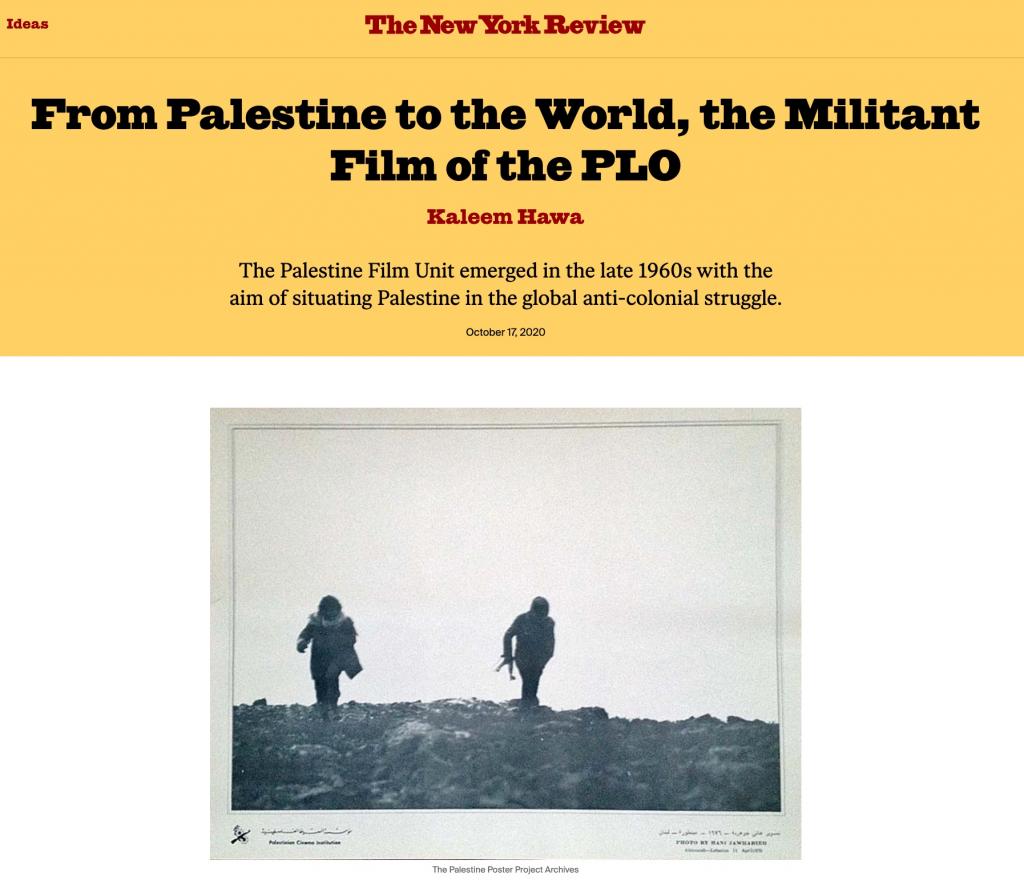Curtor's note:
The Special Collection from which this poster was drawn may be viewed here
__________________________________________
Excerpt:
The Palestinian militant film project emerged in the aftermath of the 1967 Arab–Israeli War, hoping to win international sympathy and solidarity by showing Palestine as one dialect in a global language of anti-colonial struggle. The war—which lasted six days—ended in crushing defeat for the Arab armies and created a new, second wave of Palestinian refugees, as well as an occupation of the West Bank and Gaza that continues to this day. Soon after, Jordan became the main base of operations for the Palestinian Liberation Organization (PLO), which had formed in 1964 and carried out attacks on Israel with passive support from the Hashemite Kingdom. During this time, the PLO, like other anti-colonial movements of the era, also turned to the arts to carry its message to a wider audience—developing a counterinformation program aimed at broadening the battlefield of the Palestinian resistance.
The Palestine Film Unit (PFU) emerged from this milieu. Founded in Jordan in 1968 by Mustafa Abu Ali, Hani Jawharieh, and Sulafa Jadallah—considered by some to be the first Arab camerawoman—the PFU produced many 16mm documentaries over the next fourteen years, which were among the earliest examples of a militant Palestinian cinema. The initial films highlighted material elements of Palestinian disenfranchisement and death, modeling the aesthetics of other anti-imperialist movements at the time, like those in Cuba, Vietnam, and Angola. PLO fighters were notably inspired by their Vietnamese comrades—the fedayeen, or guerrillas, in fact, traveled to Vietnam to learn resistance tactics from the Vietcong, some even taking noms de guerre such as Abu Khaled Hanoi.
Abu Ali, who studied film in London, was interested in what it would mean to make films closer to his own freedom struggle. The PFU’s goal was to document the daily lives of Palestinians engaged in acts of resistance, both large and small, and support the efforts of the fedayeen. The group worked with two cameras at first, developing their negatives in the kitchen of a PLO safe house in Amman, Jordan, drying the prints over the stovetops. The filmmakers developed a body of scenes, shot without a script or, sometimes, a clear purpose. But the intention was cooperative: footage drawn from this reservoir would later be edited together for a particular campaign. Many of these films therefore had striking visual similarities, as they were built from a common collection of visual images upon which the filmmakers could overlay more individual or personal perspectives using editing and voiceovers.
Source:
https://www.nybooks.com/daily/2020/10/17/from-palestine-to-the-world-the...

